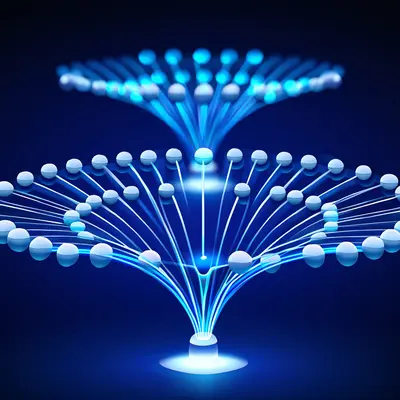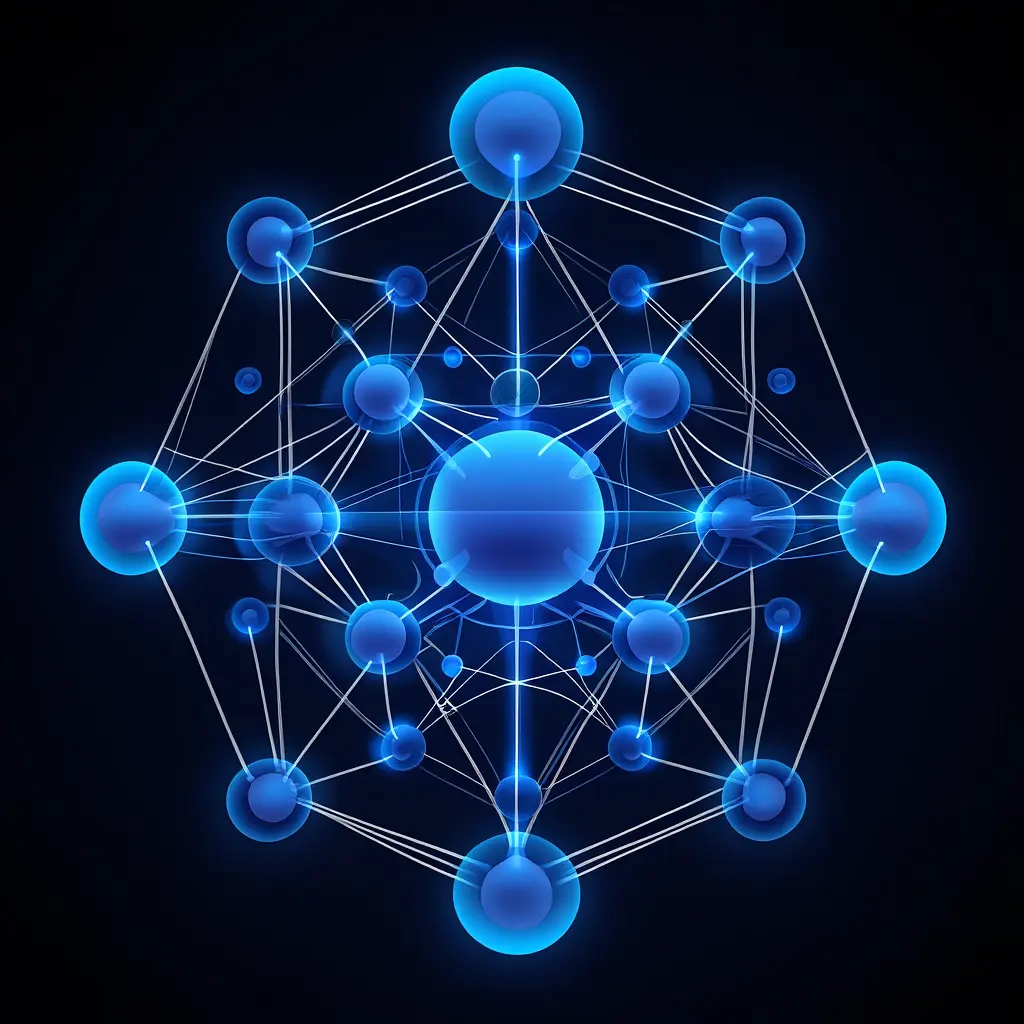You hear about them constantly in the world of Artificial Intelligence: neural networks. They're the powerful engines driving breakthroughs in image recognition, natural language processing (like ChatGPT), self-driving cars, and so much more. But for many AI for beginners, the term can sound intimidating and complex. What exactly *are* neural networks, and how do they "learn"? This visual guide to AI aims to demystify the core concepts of neural networks in a simple, accessible way, giving you a foundational understanding of these remarkable structures.

1. Inspired by the Brain (Loosely!)
The concept of a neural network is loosely inspired by the structure and function of the human brain. Our brains are made up of billions of interconnected cells called neurons that transmit signals to each other. Artificial Neural Networks (ANNs) attempt to mimic this biological network in a simplified, mathematical way.
It's important to note that while the inspiration is biological, ANNs are mathematical models run on computers – they are not conscious or "thinking" in the human sense.
2. The Basic Building Block: The Neuron (or Node)
The fundamental unit of a neural network is an artificial neuron, often called a **node** or a **unit**. Think of it as a tiny information processor.

A simplified artificial neuron.
A neuron typically does the following:
- Receives Inputs: It gets one or more inputs from other neurons or from the initial data fed into the network.
- Weighted Sum: Each input connection has an associated **weight**. These weights are crucial – they determine the strength or importance of each input. The neuron multiplies each input by its weight and sums them up.
- Activation Function: The weighted sum is then passed through an **activation function**. This function introduces non-linearity and decides whether the neuron should be "activated" (i.e., fire a signal) and what that output signal should be. Common activation functions include Sigmoid, ReLU, or Tanh.
- Produces an Output: The neuron then sends its output signal to other neurons in the next layer.
These **weights** are the parameters that the neural network "learns" during the training process.
3. Layers of Neurons: Structuring the Network
Neurons are organized into layers:

Basic structure of a neural network with layers.
- Input Layer: This layer receives the initial data. For example, if you're training a network to recognize handwritten digits, the input layer might have a neuron for each pixel in the image.
- Hidden Layer(s): These are the layers between the input and output layers. This is where most of the "thinking" or computation happens. A neural network can have one or many hidden layers. Networks with multiple hidden layers are called **Deep Neural Networks (DNNs)**, which is the foundation of **deep learning basics**. Each hidden layer learns to detect increasingly complex features from the inputs of the previous layer.
- For example, in image recognition, the first hidden layer might learn to detect edges, the next might combine edges to detect shapes (circles, squares), and subsequent layers might combine shapes to recognize objects (eyes, noses, then faces).
- Output Layer: This layer produces the final result or prediction of the network. The number of neurons in the output layer depends on the task.
- For classifying images into 10 digit categories (0-9), the output layer might have 10 neurons, each representing a digit, with the most activated neuron indicating the network's prediction.
- For predicting a single continuous value (like a house price), it might have just one output neuron.
Information generally flows in one direction, from the input layer, through the hidden layers, to the output layer. This is often called a "feedforward" neural network.
4. The "Learning" Process: Training the Network
So, how do these networks actually learn? The process is called **training**, and it typically involves these steps (greatly simplified):
- Initialization: The weights on all the connections between neurons are initialized, often with small random values.
- Forward Propagation: A piece of training data (e.g., an image of a "7") is fed into the input layer. The signals propagate forward through the network, layer by layer, with each neuron performing its calculations, until an output is produced (e.g., the network might initially predict "3").
- Calculate Error (Loss Function): The network's output is compared to the actual correct answer (the "label" – in this case, "7"). A **loss function** measures how wrong the network's prediction was. A higher loss means a bigger error.
- Backward Propagation (Backpropagation): This is the crucial learning step. The error is propagated backward through the network, from the output layer to the input layer. During this process, an algorithm (often an optimizer like Gradient Descent) calculates how much each weight in the network contributed to the error.
- Adjust Weights: The weights are then adjusted slightly in a direction that will reduce the error for that specific training example. Weights that contributed more to the error are adjusted more significantly.
- Repeat: Steps 2-5 are repeated thousands or millions of times with many different training examples (different images of digits, in our example).
Through this iterative process of making predictions, calculating errors, and adjusting weights, the neural network gradually "learns" to identify the complex patterns in the data that allow it to make accurate predictions. This is the essence of the AI learning process for many models.
5. Why "Deep" Learning? The Power of Depth
The "deep" in deep learning basics refers to the use of neural networks with many hidden layers (deep neural networks). This depth allows the network to learn a hierarchical representation of features:
- Early layers learn simple, low-level features (like edges in an image).
- Intermediate layers combine these to learn more complex features (shapes, textures).
- Later layers combine those to recognize even more abstract concepts or objects (faces, cars, specific scenes).
This ability to automatically learn relevant features at multiple levels of abstraction is what makes deep learning so powerful for tasks like image recognition, natural language understanding, and speech recognition.
A Foundation for Modern AI
Understanding the basic principles of neural networks – neurons, layers, weights, activation functions, and the training process involving forward and backward propagation – provides a crucial foundation for comprehending many of the AI marvels we see today. While the actual mathematics and implementations can be very complex, this conceptual and visual guide to AI hopefully demystifies the core engine driving so much of modern Artificial Intelligence. As you continue your AI learning journey, these foundational concepts will serve you well!
What aspect of neural networks do you find most fascinating or confusing? Let's discuss!
